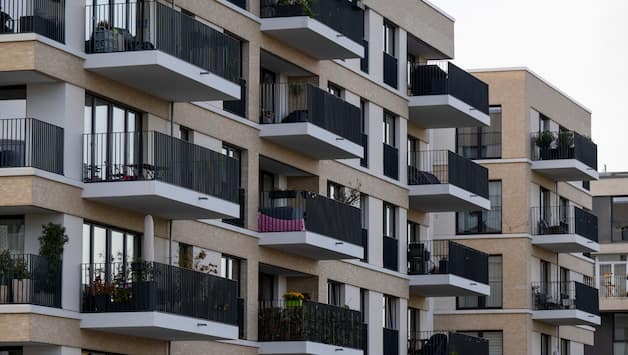The situation on the German housing market is precarious because all the indicators suggest that the Federal Republic is already in crisis mode. An inventory.
The Pestel Institute, the Ifo Institute, the Federal Statistical Office and Immoscout24 are warning of a housing market crisis in Germany. All surveys and studies currently indicate that there is a housing shortage in this country. The reasons for this are diverse. But first things first.
Now save articles for later in “Pocket”.
In a recently published study, the Pestel Institute, an institution with a research focus on the subject of the housing market, examined the need for housing in Germany. The need arises from three aspects: First, a further increase in the adult population and a further reduction, albeit weaker, in the average household size can be assumed. Secondly, housing deficits must be reduced. The Institute estimates the need for around 700,000 apartments that are affected. And third: the qualitative need. Around ten percent of the housing stock is considered non-refurbishable and must be replaced by 2045.
The federal government had set itself the goal of building 400,000 new apartments every year in order to cover the demand in the coming years. As a result, the Pestel Institute goes along with this estimate. However, the traffic light coalition has so far fallen far short of this goal. According to information from the housing industry, only 250,000 apartments were built in 2022.
“It would be illusory to believe that in a few years significantly fewer people will be living in Germany than today,” says Matthias Günther, director of the Pestel Institute of “Bild am Sonntag”. “I don’t see any signs of immigration slowing down or that people are moving away from Germany on a large scale.”
Most of the people who have come to Germany since 2010 are workers from other European countries, Günther continues. In addition, there are many refugees from the Ukraine and the Middle East, who all have to be housed in Germany somehow. “Society will have to deal with the housing deficit for the foreseeable future.”
According to Günther, people who occupy a particularly large amount of space – these are mainly older people in Germany – should be prosecuted. He refers to a suggestion by the Federal Environment Agency: “Anyone who lives in a particularly large number of square meters should also have to pay more taxes.”
Data from the Ifo Institute also shows that residential construction in Germany is stagnating. The Wiesbaden statisticians recently warned of a deterioration in residential construction, especially for single-family homes. 15.9 percent of construction companies had to cancel orders.
The stagnation in German housing construction is due, among other things, to higher interest rates and expensive materials. The prices for new construction of conventionally manufactured residential buildings rose by almost 17 percent in November, as many builders hold back on projects or cancel them. In December, backlogs fell for the fifth month in a row. “The main reasons include the significantly more expensive housing loans, sharp rises in construction costs and the reduction in the federal government’s new building subsidy,” said Ifo expert Ludwig Dorffmeister. For private builders and housing companies, the general conditions have deteriorated drastically.
Figures from the Federal Statistical Office show that in November 2022 the construction of 24,304 apartments was approved in Germany – 4,716 or 16.3 percent fewer than in November 2021. A total of 321,757 building permits were issued from January to November – 5.7 percent or 19,280 fewer than in the same period last year (January to November 2021: 341,037).
From January to November 2022, a total of 276,474 apartments in residential buildings to be built were also approved. This is a decrease of 5.8 percent or 16,962 apartments compared to the same period last year. The decline was particularly sharp for single-family homes, where the number of building permits fell by 15.9 percent, or 13,710 apartments, to 72,495. The number of approved apartments in two-family houses also fell by 10.1 percent or 2,930 apartments to 26,174. In contrast, the number of approved apartments in apartment buildings rose by 1.2 percent to 171,911.
The advertisements on the Internet portal ImmoScout24 show how strong the demand for living space is in Germany. The capital is the front runner. An average of 139 interested parties respond to an advertisement. In other cities, the demand is not quite as strong, but it is still high: in Munich there are 63 inquiries per apartment advertisement, in Cologne 60, in Hamburg 56, in Düsseldorf 37 and in Frankfurt/Main 28.
According to the portal, rents in new buildings and older apartments have developed differently from autumn to winter. In Berlin, rents in new buildings rose by 1.3 percent to EUR 15.95/m², taking third place behind Munich with EUR 21.37/m². In contrast, the prices of older apartments fell by 0.3 percent to 11.45 euros/m², exactly 4 cents per square meter less.















